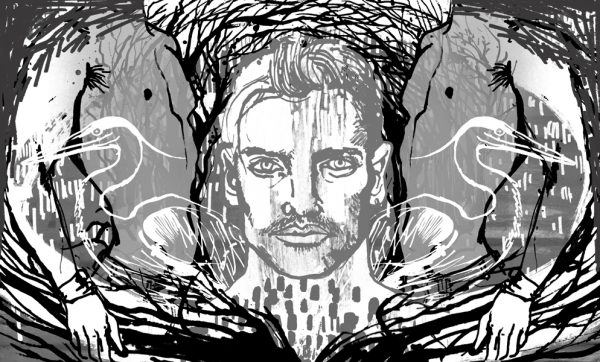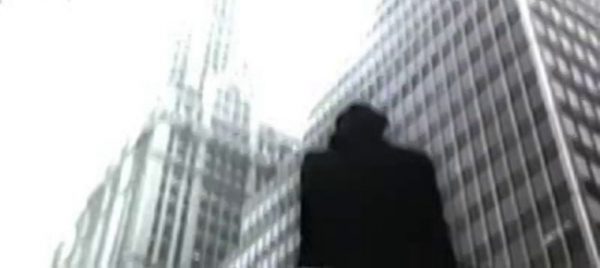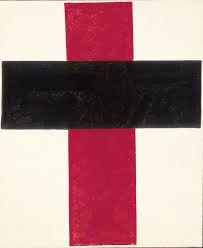In the grape hyacinth blue jersey – yellow strip at V-neck, blue tie, navy trousers of Kinsale Community School, Wesley Loramar would wait in cubicles at the public lavatory at the beginning of Pier Road, Kinsale, aged sixteen, with the look of the bored cherub in Raphael’s The Madonna of the San Sisto.
Kinsale, with its whaling frame houses, was where the pirate, Anne Bonny, was from.
Anne’s lawyer father, William Cormac, got a servant girl, Peg Brennan, pregnant. The three fled to Charleston, North Carolina where William became a plantation owner.
When she was thirteen Anne stabbed a servant girl. At sixteen she married and went off with James Bonny, a pirate. On sea she had a homosexual companion, Pierre Bouspeut.
She decided to elope with another pirate, John ‘Calico’ Rackham. On the ship Revenge she met Mark Read who was really Mary Read and they became lovers.
The ship was captured October 1720, the men executed, the two women spared because they claimed pregnancy.
Wesley, wheaten and auburn hair, Titian red eyebrows, body like a military road, hoping to be picked up, would be seen hitchhiking in school uniform on the Inishshannon Road, three miles North West of Kinsale, close to Dunderrow, not far from the Bandon River.
Dunderrow – fortress of oak plain.
There is an American chemical factory there now.
Coins left by Elizabeth’s forces before the Battle of Kinsale 1601, have been found here.
In yesteryears Mrs Harrington would travel by pony and trap from Kinsale each day to teach here, picking up pupils on the way.
Her pony was cared for while she was teaching by the Bowen family.
A man named Billy the Butlerowned the local manor just prior to Miss Harrington’s career.
Bankruptcy had dogged successive owners of that manor and he too went bankrupt.
Wesley would be seen coming out of Dunderrow wood, which had the sow-like smell of lesser celandine in spring – slight moustache like the down inside the foxglove – where he’d lain with workers from the chemical factory. He was like Orpheus who stole their husbands from the Thracian women.
Some said he’d been doing this since he’d worn the grey jumper and gey trousers of Saint John’s National School.
Some said he’d once been seen coming out of the wood in red PE jerseys of Saint John’s.
Sometimes too he’d be seen hitchhiking at Ballythomas Cross Road.
They described him as the white headed boy.
On his wall in Saint John’s Terrace was one of Elizabeth Peyton’s portraits of John Lennon: top-boy John Lennon in shirt with winged collars, aquamarine starry tie against a cranberry background with lightings. And Wesley did not look unlike an Elizabeth Peyton portrait himself.
He made love to a member of Trinity College Rowing Club, with frog green and tadpole brown mix eyes and a ginger lighting of pubic hair who gave him a Trinity Rowing Club jacket as a reward – the words Dublin University Rowing Club on it.
Wesley went to England, saw boys doing striptease in police uniform, soldier’s uniform, sailor’s uniform, Black Watch kilts and Balmorals, boys naked but for mortarboard hats.
‘Before the street is full of terrors…’
When there was the nail bomb attack on the Admiral Duncan Pub in Old Compton Street, Soho – lilac fascia, Admiral with silver cowslick and water-green lining to his coat – killing a pregnant girl and two men, people wrapped in thermal blankets under Saint Patrick’s Church, Wesley left England.
On his return, in white, New Age kilt, plaid cap with prince’s plume, black work boots, he’d walk on the Headland by Foxes’ Cave, as far as the Block House, with its iron barred windows, from which they’d put pontoons and chains to the other side of the Estuary, during James II’s stay, to prevent ships from entering the harbour.
As it was May the Headland was blue and gold – Stuart colours – bluebells, buttercups.
The Lusitania, named after a district in Spain, was sunk off the old gold Old Head of Kinsale May 1915, 198 lives lost, including that of Hugh Percy Lane – willowy, mushroom eared, moustachioed – who bequeathed paintings by Renoir, Monet, Degas, Manet, Vuillard to Ireland.
Fond of needlework as a Cork Church of Ireland rector’s young son, owned a rose-diamond hair ornament of Marie Antoinette’s, an unsigned condical in his will the subject of a bitter quarrel between England and Ireland.
The Unionist MP Harford Montgomery Hyde, whom Ian Paisley wanted condemned by the Orange Order for suggesting William of Orange was gay, argued for the return of the pictures from London to Dublin.
Two Irish students in beat jerseys removed one of them – a Berthe Morisot (she herself painted by both Manet and Renoir) – from the Tate Gallery.
Eventually the paintings were shared, including one which was on Wesley’s wal in the neighbourhood of John Lennon – Renoir’s Les Parapluies: girl with flaming marigold hair, in lavender dress, besieged by violet umbrellas.
Wesley would return to town by Compass Hill, past the convent-boarding school.
The nuns got old. No vocations. And they closed it.
When Michael Jackson was accused of molesting a thirteen year old boy in 2003 when they were sleeping together at Jackson’s home in Santa Barbara County, of letting young adolescents get wild at his ranch, drinking alcohol, sleeping with him, Wesley’s career, though he was now twenty one, became more difficult, because he still looked so young.
Eyes the green brown of summer canal silt, moon adolescent nipples when he took off his shirt by Croadhoge Point.
Wesley would sometimes follow the heron on walking trips up river.
The Bandon River is full of stone crossing points. Three miles the other side of Bandon Townis a foot bridge which capsized in a storm. Bittersweet – yellow and purple flowers – flourishes here.
A sparkling white little egret is said to come to this spot for the winter.
Mostly deserted for a few years, it was here Wesley met Ciaran Crummey, aged sixteen, who’d decided it was a good swimming place.
Auburn hair, kingfisher orange undergrowth to chin. Freckles on his face like an orchard of very red apples – his head an auburn cannonball.
The tattoo Ciaran with diaeresis on C and N at the back of his neck.
‘Your one gets small after you swim,’ he told Wesley, ‘my one stays big.’ His ‘tool box’ he called this area.
‘I’m fighting with all the Poles in Bandon Townand they’re fighting with me. I punched one in the face and he had to get seven stitches.’
They started meeting her regularly.
There’d been a reformatory school in Bandon run by Brothers and a man on Bandon Bridge with a lion tamer’s moustache, always watching the Protestant heron in the river – draperies like a dowager, taking a very refined drink after devouring a snail or a fish – had been put in there as a boy and had told Ciaran about it.
‘Poor boys and orphans were sent there. The older boys used mould carbolic soap in the shape of a penis and put it up twelve and thirteen year old boy’s anuses and they’d have sex with the boy. Maybe four of them.
If a boy objected they’d gag his mouth with carbolic soap in a sock.’
Ciaran stood against the river after repeating this story, a dun penumbra to the crack of his buttocks.
One day two of the Bandon ‘shams’ – one like an owl in an Argus chain, the with face like a conger eel – saw Wesley and Ciaran make love through the wych elm, whereupon Ciaran promptly claimed he’d been raped.
Wesley was now twenty four although he almost looked younger than Ciaran.
Two guards like lappet-faced vultures – the ones with wattled and naked crimson heads – sat on either side of Wesley in court waiting to take him away.
Wesley got a six months’ custodial sentence.
First he was take to Limerick Jail where he had to share a cell with a drug dealer with the words ‘Pray for better days’ tattooed on his right arm in biro and ink.
There was an inventory of Wesley’s possessions. A black jersey he’d bought at Christopher New’s in Sohowas confiscated because he’d look like a warder in it and could get out.
His palm prints were taken.
Then he was taken in a patrol wagon to Cork Jail where a man on a sexual offence, with a tattoo of the Grim Reaper from the Salted Seaon his back, had a fabliau for Wesley.
‘There used to be a lavatory behind the Opera House in Cork. I went there one night when Thoroughly Modern Millie was playing at the Opera House and then I went to the other lavatories. When I returned that night to the one behind the Opera House it was bull-dozed.’
From Cork Wesley was transferred to Arbour Hill Dublin, associated with the draconian sentences of the revolutionaries of 1916, where a young Croatian, who’d been involved in clean-up operations in Bosnian villages when he was fifteen, commended him on what he had done: ‘Everyone must have the balls to do something against the law. In prison you’ll see if you’re a man or a pussy.’
Wesley spent a short while in adjacent Mountjoy.
A man had recently been murdered here.
In Mountjoy Wesley met Eadric Happlewhite, half Romany, half Pakistani. Chocolate bonbon eyes, teeth black as the spherical King Alfred’s cakes tree fungus.
Stirbin Eadric called jail. He’d previously known two Stirbins – Edmonds Hill Prison Suffolk and HMP Lewes, where he’d worn an orange top and blue trousers in both.
He was from Uckfield, East Sussex where they’d lived in a Reading Romano vardo with pears, apples lions’ heads embossed on the front and mugs on the dresser with the young Beatles faces on them.
His father used to hunt the badger with coal in his shoes to prevent the badger biting his feet and breaking the bones.
They’d come to Ireland after Eadric’s spells in prison.
Lived in Gort, County Galway at Greg London’s camping site opposite Texaco Garage on the Limerick Road.
So many young Brazilians working in the meat factory there, they’d formed an entire soccer team!
Then they’d lived in a highrise, Ballymun, North Dublin.
Grazed a Gypsy vanner there.
‘Me and the boys would turn the steering wheel to the left or the right on an edge in the fields of Ballymun and it would flip over. I’d joyride anything. Trucks.
Anything.
When I was first put in the Joy a woman from Ballymun used visit me. Used bring me packages. Used bring me coconut oil. Said she loved me.’
Free again, Wesley walked up the Bandon River to the spot where he used to meet Ciaran Crummey.
Like the red-crested green woodpecker that turns a faded brown in summer, like the pied woodpecker who feeds on the pincer horned Hercules ants, nude boys are not to be found in Ireland.
There were woodpeckers in this land once but they vacated it.
What kind of woodpecker Wesley wondered nursed Romulus and Remus by the Tiber under the Ficus Rominales – fig tree of Romina, Goddess of nursing mothers?
The red-crested, lesser spotted woodpecker, smallest of the woodpeckers, with strong barring, black and white, lives by rivers.
Wesley decided to leave Ireland.
‘I’ll away to fairEngland
Whatever may betide…’
But first he’d go looking for Eadric Hepplewhite.
He stayed in a hotel in Dublin run by a dentist from Bournemouth.
A boy who looked like a Vieux Carré voluptary came back with him his first night.
Mandatory rose tattoo of Crumlin, South West Dublin at fourteen. Seduced by his best friend’s father when he was fifteen, who was wearing construction gear.
He liked uniforms against him ever since. Especially Garda uniforms.
‘They’re only schoolboys. Trying to make a name for themselves.’
Had Mother in Chinese tattooed on his right arm and a Japanese koi fish on his right thigh. But the rose tattoo was still there, faded near the Chinese lettering.
Wesley took the 13 bus to Ballymun.
‘How’s your dog?’ a man with dropped ears like a Staffordshire bullterrier asked a man with a facial scar like the Joker in Batman, on the bus.
‘Collie?’
‘No. The Alsation.’
‘He died.’
‘How’s that?’
‘He was seventeen.’
‘One dog is as good as another. I have an Alsatian-greyhound crossbreed. Hairy on front. A greyhound behind. Jumps over the wall. Terrifies everyone in Ballmun. He even frightens Fat Freddie Thompson.’
The Hepplewhites were no longer living in Ballymun a woman who looked like Gina Lollibridga adrift from her era, in a dress patterned with Calamity Janes in various poses – on horseback, prostrate, sitting on stiles, sharp shooting – and cactuses which appeared to have nipples, told Wesley.
‘It’s a complicated city,’ Wesley commented looking at discarded electric coolers and discarded electric heaters.
‘It’s mental,’ the woman replied.
Wesley searched Smithfield Sunday Horse Market for Eadric.
They were selling colour pictures of Reading Romano vardos, of Bedlington terriers, Scottish Lucas terriers, Irish Staffordshire terriers, Border terriers, Chihuahuas, Irish deer hounds, Aylesbury ducks.
An Indian man purchased a picture of Travellers in Sixties clothes and the tartan an Antrim vicar met Traveller women in, in the 1670s.
Horse trappings were sold.
Strawberry roan vanners, heavy black and white stallions, buckskin American quarter horses, miniature Falabella Argentinean horses – descended from horses brought to Argentina by Andalusians, from hers of the Mapuche Indians in southern Buenos Aires province, from Crillo stock – harnessed to sulkies, mini-broughams, carts.
Welsh ponies tethered to beech trees.
A small Traveller boy who looked like an Easter chick galloped on a red, leopard-spotted Shetland-Appaloosan pony.
An Indian boy who drove from Belfast sold dinkie pork pies and bread an butter pudding with raisins soaked in Bushmills whiskey.
Smell of pizza, porchetta, panini.
Many of the boys had a spit of hair at the nape of their necks like the stamens of St John’s Wort used inEast Sussex for hairdressing.
A teenage, maple-syrup faced Rumanian boy played The Wild Colonial Boy on a Ballodi accordion while a Traveller boy with Cleopatra’s asp hairstyle – shaven sides, cable on top – sang the words.
Jack Duggan, an only son from Castlemaine County Kerry, where Traveller boys commit suicide in dozens now, usually by hanging themselves, left for a life of banditry in Australia at sixteen, was felled by the bullet of Fitzroy.
James McPherson – the Egyptian – had played his fiddle on the gallows at Banff, Scotland, in 1700.
A Traveller boy with a perky dog face in Brendan’s Café on Mary’s Lane, where there was a poster of the young Elton John dressed as an undertaker, but in black, high boots, told Wesley that Eadric had moved to Finglas.
There was heavy gang warfare at the moment between Finglas gangs and Raheny gangs.
Raheny gangs wore a red ribbon in their lapels. Finglas gangs wore a diamond stud in their ears.
At the entrance to the estate:
John Mouse Lee Karl R.I.P.
And:
Heartbreak.
‘It’s been terrible here the last few weeks,’ a woman with bleached blonde hair, pancake face make-up, hare-lip, deliberately ripped jeans, wheeling a baby in fluff jacket like a marshmallow hedgehog, said to Wesley. ‘Murders. They were blowing up houses. Blowing up Traveller’s trailers.
I had this child by Smudgy. He was in jail. In the Midlands. They let him out. They said: “You’re drug free now!”‘
Wesley found Eadric in a flat with a Welsh cob in it.
Eadric had brought his horse into the house and tied him to the banister when local boys began climbing over the wall or leaning over the wall and sticking cider bottles up the horse’s anus.
The crest of Eadric’s hair was now dyed the orange of the florets of the red-hot poker flower and his black cargo trousers dipped to show a provocative display of floral print underwear.
Under a snow leopard print light shade with boa feather borders, sitting on a cushion with shaven-headed Raw on it, were two fourteen year old boys snogging, one from Stirrup Lane near Smithfield Market, one from Coolock, South East Dublin.
The one from Coolock had long, side-swept, jappaned bangs, stud through lower mouth wore mouse-grey, wine rimmed Vans skate shoes, and was affecting the mannerisms of an Acapulco cross-dresser.
The one from Stirrup Lanewore a poppy and black lined Bohemians shirt.
Eadric agreed to accompany Wesley to England.
The Pennines irradiated with cottongrass.
First they went to the Appleby Horse Fair in the Westmoreland fells.
A piebald, Appaloosan crossbreed was washed in the River Eden – markings like blue poppies.
Gypsy boys favoured borders hair-style – messy top, shaven sides with outlines on front and behind the ears.
Young Romany boys like corbies gathered at Low Cross, a water pump near it around which two hiring fairs were held in the Middle Ages.
Irish Traveller boys ascended Gallows Hill as they would Mount Krizevacin Bosnia and Herzegovina, which has a cement cross on top, with blue and brown and pink rosaries around their necks.
‘Times have changed. Romany girls like to show their minges.’
Romany girls with butter brandy midriffs paraded the town in Queen Hippolyte coin-girdles. Denim hot pants with bibs – one strap unfastened. Reflector-yellow high heels. Silver spike heels.
Some had Pocahontas – squaw – hairstyle and dress.
A blacksmith shod a mottled, champagne horse with hot shoe which smoked in the sleet, while the Gypsy boy owner looked on in oilskins.
A sulky was drawn against the snow capped June fells by a cream-coated Cremello horse, three youths in it, the ones on the outer sides with arms entwined about one another.
‘There’s snow on the Derbyshire peaks in July,’ Eadric told Wesley, ‘They speak Bram there.’
They drove South, crossing the Ribble River which once formed the southern border of the kingdom of Northumbria.
‘Where hast thou been since I saw thee?
On Ilkley Moor without thy trousers?’
The oystercatchers live on the moors now, building their nests in railway ballast.
It would be a long time before Wesley would return to the town he was from where Madame Rose and Madame Sylvia told fortunes in summer, and the Palomino horses of Piper’s Funfair went around to mariachi music, with Old Kinsale Head nearby where you often felt you could hear the foghorn of the Lusitania coming from far out at sea – like a question about Renoir who’d compared himself to a swallow following a gnat.




